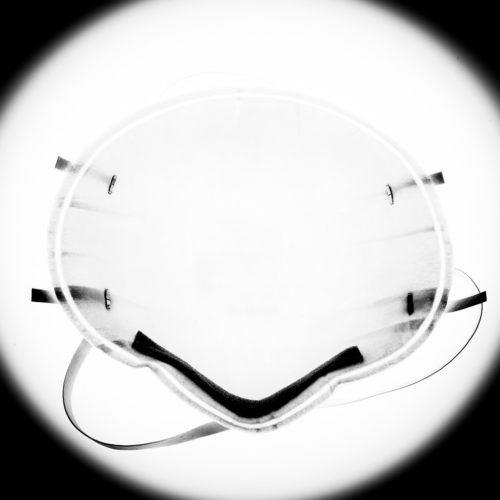In December 2019, a viral outbreak emerged in Wuhan, China. By the time the World Health Organization formally classified the outbreak as a pandemic in March 2020, millions had been infected worldwide, and the toll on human life and misery was already incalculable. At the time of writing, more than 130,000 Americans have died as a result of this virus, and this devastating statistic continues to increase at an alarming rate.
At the same time, a familiar viral outbreak of a different type emerged. It spread and mutated quickly, ready for accommodating hosts to perpetuate its survival. In the pandemic’s wake, we witnessed the explosion of viral social media content such as Plandemic, an alternate exaggerated narrative which sought to perpetuate the types of claims one would expect from the title. These kinds of conspiracy theories have always existed in many different shapes and forms; however, COVID-19 struck at a time when society was suffering from a pre-existing condition of deep mistrust. The growing prevalence of science denialism in our society has become a public health problem in and of itself. Tribalism has only made the virus of misinformation resistant to any treatment or inoculation.
Those who believe stories such as Plandemic never ask themselves which is more likely, let alone true: Is it possible that the creators of these conspiracy theories have unmasked the medical field for what it really is? Or are these theories simply the earnest narrative of individuals who base their argument on a misunderstanding — or worse, intentional deception? If the former and not the latter, why then did so many medical professionals risk their lives on the frontlines? Were those in health care intentionally cashing in on some widespread though covert lucrative secret? The adverse financial impact on so many community practices would suggest otherwise. Furthermore, to be capable of such a feat would necessitate an extraordinary degree of omnipotence and cunning — and a malevolence that would be truly astonishing. Perhaps, as portrayed in these extravagant imaginations, those in health care have been unintentionally and passively exploited by shadowy overlords all along. To have that level of misdetection under one’s own nose would require an extraordinary degree of incompetence and cluelessness. Indeed, scenarios like this exist only in fiction — or comedy such as Scooby Doo — for a reason.
With far-fetched theories like these being believed, is it any wonder public health officials have difficulty trying to convince certain members of the public to wear a mask or maintain social distancing? Or, is the record resurgence of cases in many states all that surprising? The extent to which people today prefer to believe theories revealed by those who have no relevant experience, or worse have compounding motives of their own, is of troubling epidemic proportions.
The revelatory power of the COVID-19 pandemic showcases our collective missing the mark. The pandemic slammed into a health care system full of good people, buckling under the weight of mismanaged incentives, quota demands, and overworked staff increasingly burnt out or disillusioned. Medical providers realize firsthand what seems to be a health care system with goals different from those of patients or providers. Experts find themselves treated as technicians, and their recommendations dismissed unless convenient or desired. Patients experience disproportionate access to care, and the poor have suffered overwhelmingly for it. The greater public is dealt a losing hand in a game of massive income inequality.
How vastly different would our public discourse be if more found themselves given a stethoscope in one hand and a rain-poncho-turned-protective-gown in the other, nominated for an intensive care unit in New York City. Imagine having to push aside dead bodies to make ventilators available for newly intubated patients, with many others nearby gasping for air, perhaps soon to need ventilators themselves. Traffic jams of constant stretchers. The code alarms that never cease. Laryngoscopes wiped down and re-used on neighbors due to lack of supplies. Children never seeing their family members again. Death without loved ones. Death instead surrounded by gowns, gloves and masks — when the protective gear was available at all.
Perspectives like those that enabled Plandemic highlight the tendency of oversimplified presumptions to become normalized and dogmatic. People will always have legitimate concerns about state secrets, regulatory disregard, medical safety, information withholding, excessive profiteering and international agendas. Accordingly, we should denounce the impulse to demonize the heralds of such concerns, which sabotages any inroads to discourse. Indeed, without communication, this other virus of misinformation manifests itself in conspiracy theories, hateful rhetoric and entrenched mistrust. Our lack of collective discourse is at the expense of our ability to communicate honestly and openly about enormously complicated and multifaceted problems. And trust, the backbone of a successful public health program or any form of progress, goes out the window. Instead of further sowing mistrust, we need to be able to talk and listen to one another, respect one another and not view each other as enemies, especially now when collective effort is more important than ever in combating this pandemic.
While chaotic signs of social unraveling should concern us, the stories and images of doctors, nurses, respiratory therapists, first responders and so many others on the front lines should inspire us as testaments to the better side of our nature. And just as we will ultimately emerge victorious from one virus so can we contend more constructively with other viruses, if we only remember that we are all in this together.
Image credit: mask by ~jar{} is licensed under CC BY 2.0.

